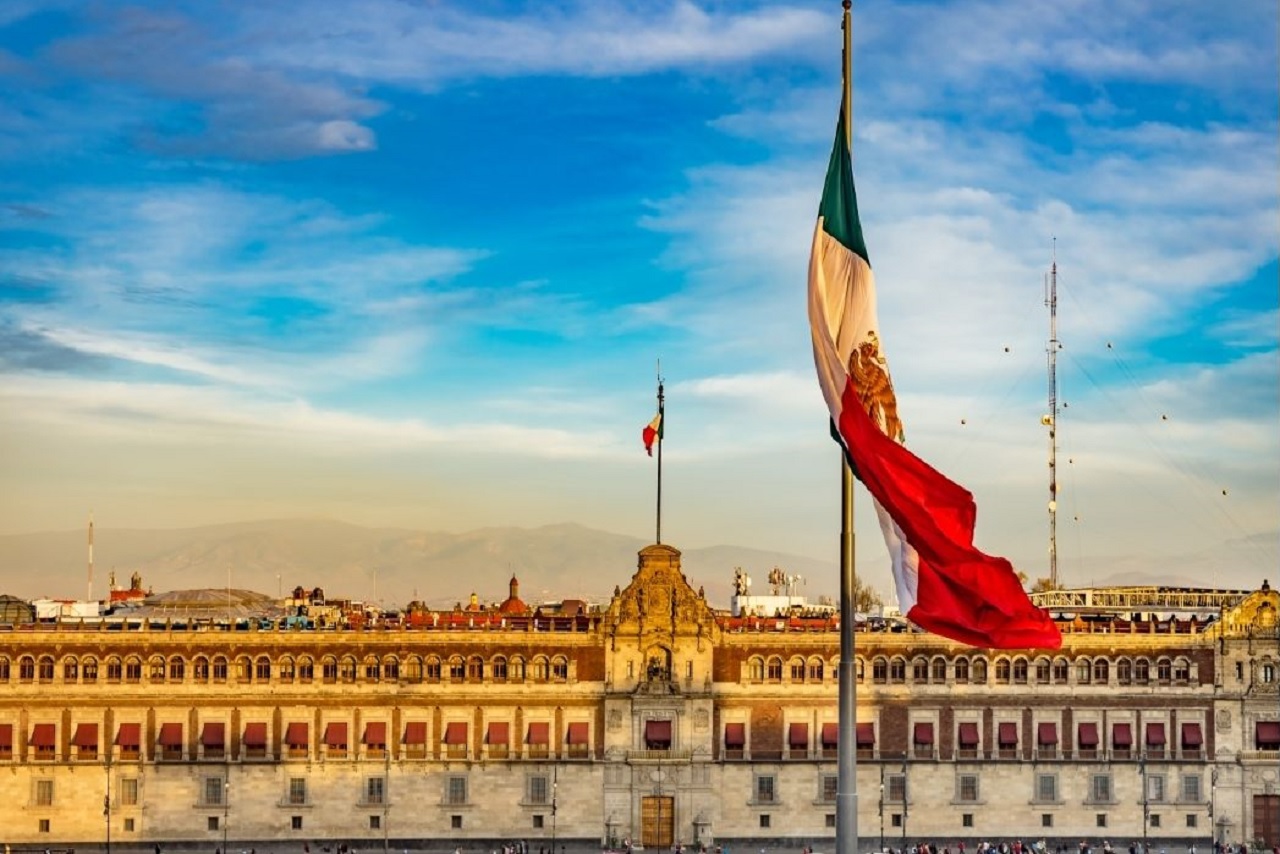When you visit a country for the first time, you admire everything you see, and without a doubt, the national symbols are part of that discovery of the culture and idiosyncrasy of the people you are visiting; so it is time to immerse in the history of Mexico in this post “Flag of Mexico: meaning and colors .”
Whether you are Mexican touring the country or a foreigner visiting it, seeing the enormous national flags flying in different parts of the chosen destination is surprising.
Feelings such as respect, admiration, and pride, are present on the tour of this beautiful country, and it goes without saying when you visit the Zócalo in Mexico City during the lifting and lowering hours of each day, or the national dates in September when the colors green, white and red decor every corner of Mexico.
With such beautiful shows, you deserve to know a little more about its history…
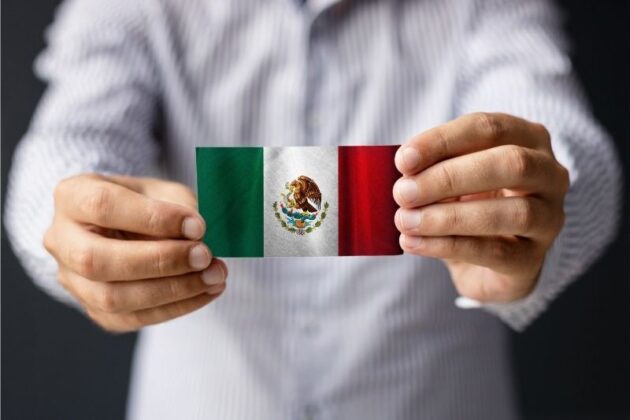
The Mexican Flag
Although one may believe that the current Mexico Flag was created a couple of centuries ago, reality indicates the opposite; it was only in the 60s of the last century when its design was finally defined.
Throughout the history of Mexico, there were several Mexican flags, depending on the bibliographic source one consults, there will be about 4, 7, or 8 different flags.
Taking the data presented on the Mexico’s Government website as a source, the country had 4 official flags and others were added that arose from the historical and political situation of the moment:
Official Flags of Mexico
The banner with the image of the Virgin of Guadalupe that the priest Miguel Hidalgo held during Dolores’ call (fight for independence), is considered the first Mexican flag.
After the war of independence, the government of Agustín de Iturbide adopted the tricolor flag of the first Mexican government, for some this was the second Mexican flag, and for others the first.
This already included the figure of the eagle perched on a cactus, as well as the crown of the Empire and the shield in the center with the image of the eagle, although it was not like the current one.
On the other hand, it is said that the second flag was the one used by Benito Juárez when he assumed power and established the Republic, similar to the previous one but with a “Frenchized” eagle.
The third National Flag is the one displayed at the time of the empire of Maximilian I of Mexico; its design had changes in its proportions, in addition to four crowned eagles being placed in each corner of the flag.
This was in force until 1867, the death of the Austrian monarch.
During the presidency of Gustavo Díaz Ordaz, in 1968, the Fourth National Flag was adopted by decree, which is the one we currently know, confirmed by law on February 24, 1984. In it, the shield with the eagle is on both sides.
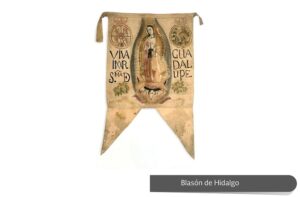
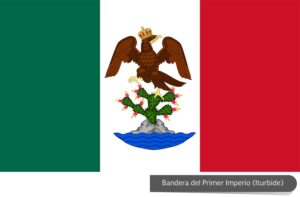
Extra official Mexican flags
The tricolor flag of the Trigarante Army during the Iguala Plan; was white, which meant the Catholic religion, green, independence, and red, the union of Mexicans.
The flag that was carried by the Cristero movement, with modifications such as placing the image of the Virgin of Guadalupe above the eagle and the legend “Long live Christ the King and Our Lady of Guadalupe.”
The Carranza Flag, which was intended to mark the end of the Porfirio regime; an eagle was placed in profile alluding to the Republic.
The 1934 Mexican Flag appears as part of the legislation for the patriotic symbols of that year; the outline of the National Shield is modified. It was in 1940 when President Lázaro Cárdenas made February 24 officially the “Flag Day”.
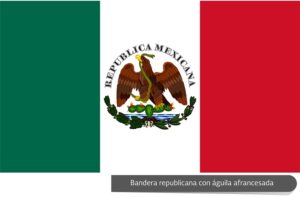
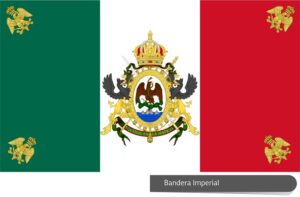
Mexican flag, meaning of the colors
Green symbolizes the hope of the people in the destiny of their race;
White represents unity;
Red identifies with the blood that the heroes shed for the Homeland.
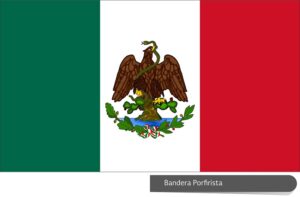
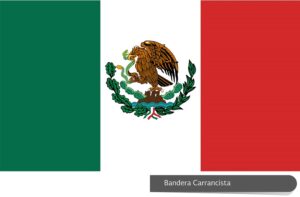
Shield of the Mexican Flag
The shield of the flag represents the legend that tells when Huitzilopochtli prophesied to the Aztecs, during their migration from Aztlán, that they should look for an eagle perched on a cactus in a lake with a snake in its claws.
Upon seeing this scene, they founded the city of Tenochtitlán, current Mexico City, in that place.
The eagle was modified seven times throughout history, until in 1969 it became what it is today.
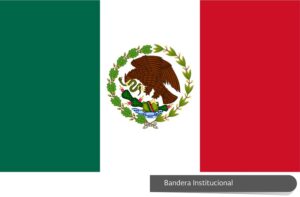
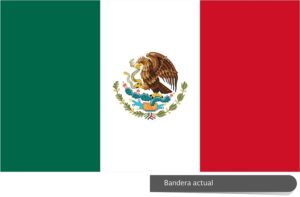
Mexican Monumental Flags
In 1999, under the mandate of the then-president of Mexico, Ernesto Zedillo Ponce de León, the Monumental Flags of Mexico program was created; the general objective of the law was to promote the Mexican flag, coat of arms, and anthem to instill a sense of patriotism in the population.
In Mexico City, three were located, one in Tijuana, one in Ciudad Juárez, along the border; sometime later, one more in Veracruz, being the main seaport of Mexico, another was assigned to Iguala, where the Three Guarantees flag was recognized as the first flag of Mexico.
Over time, more monumental flags were installed, so we found the highest flagpole of 125 meters in Durango, another 120 meters was built for a 60-meter-wide national flag in Piedras Negras, Coahuila.
We also find monumental 100-meter flags in Monterrey, Ensenada, Cancun, Nuevo Laredo, Chihuahua, Dolores Hidalgo, and San Luis Potosí.
How about taking a tour of all those places and taking a nice selfie? Dare to live that experience, a very good excuse to travel and enjoy!
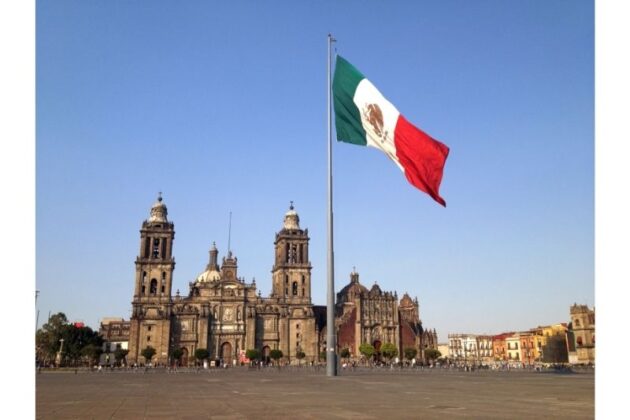
Interesting data
In 2008 the Spanish newspaper 20 Minutos surveyed to choose the most beautiful flag in the world; the Mexican flag was the winner against 104 other countries, obtaining more than 900 thousand points.
There are times when it is necessary to destroy a replica of the flag, it may be due to poor condition for example; in that case, it must be done through a cremation process with honors (playing the anthem), as it is an official national symbol, it cannot be discarded in any other way.
If you ever wondered who makes the Mexican flags, the answer is: the Secretariat of National Defense (SEDENA) is responsible for that task.
The monumental Mexican flag that is in the Zócalo of CDMX, has a raising time at 8 am and lowering at 5 pm; although it has an electric mechanism to move it, around 15 military police are necessary to carry its more than 440 pounds and be able to take it to its niche.

